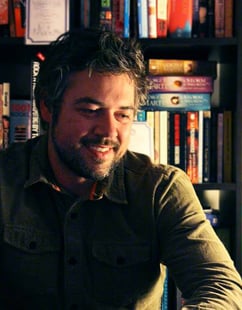

ANIMAFEST PRO | ANIMAFEST SCANNER IIII - Symposium for Contemporary Animation Studies | PANEL 3: ANIMATION IN THE MIND
Thinking Across Frames - Temporally Extended Consciousness and the Process of Animation - Andy Buchanan - Zayed University - UAE
7/06 WED 12:45 - 13:15 Chilloutka, Ilica 15/1
The experience of time and temporally extended events is a fundamental property of mind, andof the art of animation.In dealing with properties of time, does the operational logic of animation production cohere with philosophical views on the experience of time? Three competing explanatory propositions pervade the philosophical study of temporal consciousness. The ‘cinematic model’ links mental experience to the technology of the moving image, proposing that our consciousness is only able to experience a series of individual moments, like the individual frames of a film; discrete instants that together falsify an impression of an extended and flowing temporal experience. The ‘retentional model’ suggests that while consciousness exists within a single moment, the after image of previous ‘frames’ is somehow retained, and mentally represented within that single moment. Finally, the ‘extensional model’ allows that human temporal experience may not be made of single instantaneous moments, but rather of experiences that really do have the extended duration that we seem to experience. Embedded within our production technologies, the animator is faced with a new philosophical instrument: the animation timeline.
The timeline utility in most animation software (and non-digital precursors) adopts the cinematic model as its operating metaphor. But the animation timeline brings new temporal complications, such as reversibility, hierarchy and modifiability. The animation timeline also contorts time into a spatialised dimension, represented as a linear vector within the software interface. Do animators think across the frames in the timeline? Or does it merely seem that way? While the software of the animation timeline is conceived on the cinematic model of time, animators may exhibit behaviours which are more extensional in nature. This contribution explores these underlying presumptions about temporal consciousness embedded in a range of animation processes and toolsets, and out artistic reactions to them.
Andy Buchanan is a digital animation artist and animation researcher from Melbourne, Australia, best known for his sculptural morphing animation installations. Over the last decade, his work has been shown exhibited at the Sydney Film Festival, Experimenta Biennial, ISEA, National Gallery of Victoria, White Night, and at other national and international animation and projection art events. He holds a PhD in creative media from RMIT University (Plasmatic: Improvising Animated Metamorphosis), as well as degrees in animation and industrial design. Buchanan’s animation research includes digital 3D metamorphosis, animated neuro aesthetics and philosophy of mind, and improvisation in animation practice.


